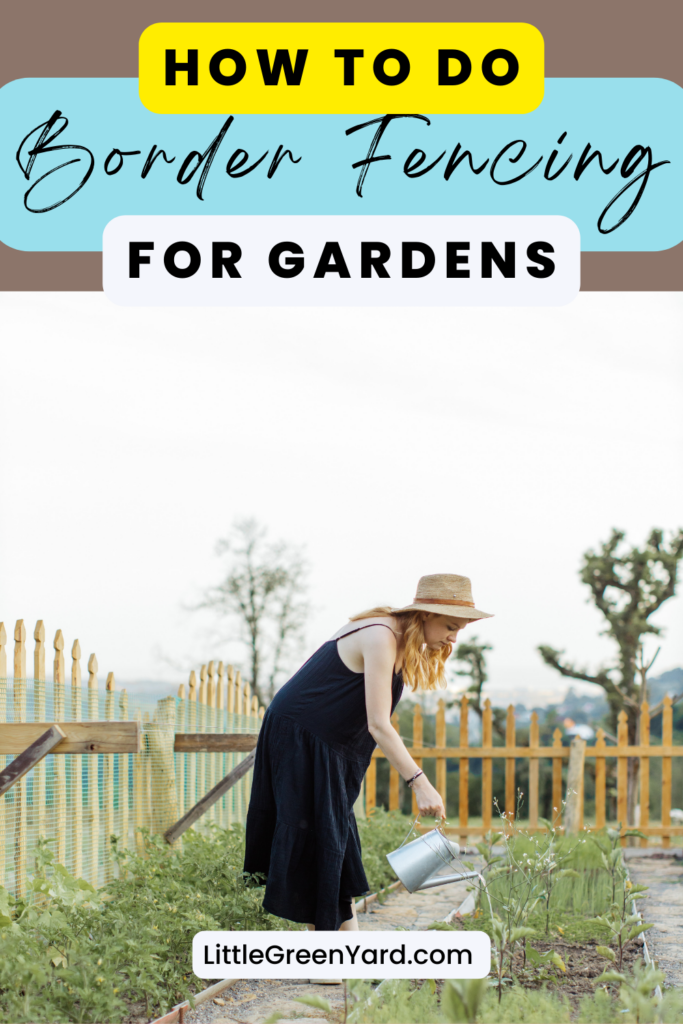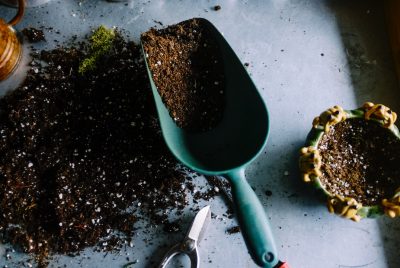How to Do Border Fencing for Gardens
As a gardening enthusiast, I understand the importance of protecting our beloved plants and creating defined borders within our garden spaces. One effective way to achieve this is by installing border fencing for gardens! In this article, I will guide you through the process of border fencing for gardens, from planning to execution, offering helpful suggestions and reasons along the way.
Gardens are a sanctuary for plant enthusiasts, and border fencing plays a crucial role in maintaining their integrity. By implementing proper fencing, we can establish clear boundaries, protect our plants from unwanted intrusions, and enhance the overall aesthetics of our garden.
Understanding Fencing
Before diving into the process, it’s important to understand the different types of fencing available. This will help you select the most suitable option for your garden. Popular choices include:
Wire Fencing
Wire fencing is versatile and cost-effective. It provides a simple yet effective barrier, keeping small animals out while allowing for visibility. It comes in various gauges, and you can choose the one that suits your needs best. This type of border fencing is suitable if you have a larger garden and are considering homesteading practices.
Wooden Fencing
Wooden fencing is a classic choice that adds a touch of natural beauty to your garden. It offers privacy, acts as a windbreak, and can be customized to complement your garden’s aesthetics. However, wooden fencing requires regular maintenance to ensure durability.
Vinyl Fencing
Vinyl fencing is a low-maintenance option that offers the look of wood without the need for frequent upkeep. It is resistant to rot, pests, and harsh weather conditions, making it a popular choice for many gardeners. Select this option as a good solution for border fencing for outdoor gardens.
Planning the Project
Proper planning is essential for a successful border fencing project. Consider the following steps:
Determine the Purpose
Identify the main purpose of your garden fencing. Is it for security, privacy, aesthetics, differentiating areas of the garden, or a combination? Defining the purpose will help you choose the right materials and design.
Check Local Regulations
Before proceeding, familiarize yourself with any local regulations or restrictions regarding fence height, materials, and placement. You may think it’s just a simple project to clearly define the boundaries of your garden, but compliance with these guidelines will save you from potential legal issues in the future.
Measure the Area
Accurate measurements are crucial. Measure the perimeter of your garden to determine the amount of fencing material required. This will help you estimate costs and plan accordingly. You don’t want to purchase too much materials in preparation for border fencing for your gardens.
Set a Budget
Establishing a budget will guide your material selection and overall project scope. Consider the long-term benefits of investing in quality materials that will withstand the test of time.
Seek Professional Assistance (Optional)
If you’re unsure about any aspect of the project or lack the necessary tools, consulting a professional can provide valuable insights and ensure a smooth installation process.
Selecting the Materials
Choosing the right materials for your garden fence is vital. Consider the following factors:
Durability
Opt for materials that are durable and can withstand outdoor elements. This will ensure your fence remains sturdy and requires minimal maintenance.
Aesthetics
Select materials that complement the style and ambiance of your garden. This will create a visually appealing space that seamlessly blends with its surroundings.
Cost
Balance your desired aesthetics with your budget. Research different materials and their costs to make an informed decision.
Maintenance
Consider the level of maintenance required for each material. Some may need regular upkeep, while others are more low-maintenance.
Measuring and Marking
Once you have selected your materials, it’s time to measure and mark the area where the fence will be installed:
Gather Tools
Collect essential tools such as a measuring tape, stakes, string, and marking paint. These will help you establish precise boundaries for your fence.
Mark the Corners
Start by marking the corners of your fence using stakes and string. This will provide a clear outline of the fence’s perimeter.
Mark Post Locations
Measure and mark the locations where the fence posts will be placed. Make sure they are evenly spaced for proper support.
Mark Gate Placement
If you plan to include a gate in your fence, mark its location accordingly. Ensure there is enough clearance for easy access.
Digging Post Holes
Digging post holes is a crucial step in ensuring the stability and longevity of your garden fence:
Determine Hole Depth
The depth of the post holes depends on the height of your fence and the type of soil. As a general guideline, aim for one-third of the total post length to be buried in the ground.
Digging Techniques
Use a post hole digger or an auger to dig the holes. Ensure they are wide enough to accommodate the fence posts and provide ample room for concrete or gravel.
Check for Level
As you dig each hole, use a level to ensure they are at the same height. This will help maintain a consistent appearance once the fence is installed.
Installing Fence Posts
Now that the post holes are ready, it’s time to install the fence posts:
Set Posts in Concrete
For maximum stability, set the fence posts in concrete. Follow the manufacturer’s instructions for mixing and pouring the concrete.
Check Alignment
As you install each post, ensure it is vertically aligned and level. This will prevent any leaning or tilting of the fence.
Allow for Proper Curing
Give the concrete sufficient time to cure before attaching the fence rails and panels. This will ensure a solid foundation for the entire fence structure.
Attaching Rails and Panels
With the fence posts securely in place, it’s time to attach the rails and panels: Install Rails
Attach the horizontal rails to the fence posts using suitable fasteners. Make sure they are level and evenly spaced.
Attach Panels
Once the rails are in position, attach the fence panels to them. Ensure the panels are properly aligned and securely fixed to the rails.
Trim Excess Material
If necessary, trim any excess material from the panels using appropriate tools. This will provide a neat and finished appearance.
Adding Gates and Accessories
To enhance functionality and accessibility, consider incorporating gates and accessories into your garden fence:
Gate Selection
Choose a gate that matches your fence style and provides convenient entry and exit points. Ensure the gate is properly sized and aligned with the fence panels.
Install Gate Hardware
Attach gate hinges, latches, and other necessary hardware according to the manufacturer’s instructions. Test the gate to ensure smooth operation.
Add Decorative Accessories
To further enhance the aesthetics of your garden fence, consider adding decorative accessories such as finials, post caps, or climbing plants.
Securing the Fence
To ensure your garden fence remains secure and stable, follow these essential steps:
Check for Stability
After completing the installation, check the entire fence for stability. Wiggle the posts and panels to ensure they are firmly in place.
Reinforce Weak Points
If any areas of the fence feel weak or wobbly, reinforce them with additional fasteners or support brackets.
Clear Vegetation
Regularly clear vegetation or debris that may accumulate around the fence. This will prevent any unwanted pressure or damage.
Maintenance and Care
To keep your garden fence in optimal condition, proper maintenance is essential:
Cleaning
Periodically clean the fence using mild soap, water, and a soft brush. This will remove dirt, stains, and algae buildup.
Inspect for Damage
Regularly inspect the fence for any signs of damage, such as loose fasteners or cracked panels. Address these issues promptly to prevent further deterioration.
Repairs and Repainting
If necessary, make repairs promptly and consider repainting or resealing the fence to maintain its appearance and durability.
Enhancing Aesthetics
A garden fence can be more than just a functional barrier. Consider these suggestions to enhance its visual appeal:
Plant Climbing Vines
Planting climbing vines near the fence can add a beautiful and natural touch. Choose varieties that are suitable for your climate and provide a trellis for support.
Install Decorative Lighting
Illuminate your garden fence with decorative lighting to create an enchanting ambiance during the evening hours.
Incorporate Flower Beds
Alongside the fence, create flower beds filled with colorful blooms. This will add vibrancy and create a seamless transition between the fence and the garden.
Troubleshooting Tips
In case you encounter any issues during the fencing process, here are some troubleshooting tips:
Dealing with Uneven Terrain
If your garden has uneven terrain, adjust the fence height accordingly or consider using stepped panels to accommodate the slope.
Preventing Rot and Decay
To prevent wood rot and decay, consider applying a protective sealant or paint to your wooden fence. This will extend its lifespan.
Dealing with Pest Intrusions
If pests are a concern, consider burying the bottom of the fence or adding wire mesh beneath the ground to deter burrowing animals.
Conclusion
By following the steps outlined in this guide, you can successfully install border fence for gardens. Remember to plan carefully, select suitable materials, and prioritize maintenance to ensure your fence serves its purpose effectively. With the right fencing in place, your garden will flourish while remaining protected and visually appealing.
FAQs
Q1: How long does it take to install a garden fence?
The time required to install a garden fence depends on various factors, including the size of the area, the complexity of the design, and your level of experience. On average, it may take a few days to a week to complete the installation process.
Q2: Can I install a garden fence on my own, or should I hire a professional?
You can install a garden fence on your own if you have the necessary tools, skills, and time. However, if you’re unsure or lack the required expertise, it’s advisable to seek professional assistance to ensure a successful installation.
Q3: How often should I inspect and maintain my garden fence?
Regular inspections are recommended at least once every six months. However, it’s a good practice to visually inspect your fence periodically and address any issues promptly. Regular maintenance, such as cleaning and minor repairs, should be performed as needed.
Q4: Are there any legal restrictions on border fencing for gardens?
Local regulations regarding garden fencing can vary. It’s important to check with your local authorities or homeowner’s association to understand any specific height, material, or placement restrictions that may apply in your area.
Q5: Can I paint or customize my garden fence?
Yes, you can paint or customize your garden fence to match your personal style or the overall aesthetics of your garden. Ensure you use exterior-grade paint or stain suitable for the chosen fencing material and follow the manufacturer’s instructions for best results.





